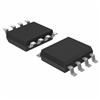MC100EL14: Features: • 50ps Output-to-Output Skew• Synchronous Enable/Disable• Multiplexed Clock Input• 75k Internal Input Pulldown Resistors• >2000V ESD Protection• VEE ...
floor Price/Ceiling Price
- Part Number:
- MC100EL14
- Supply Ability:
- 5000
Price Break
- Qty
- 1~5000
- Unit Price
- Negotiable
- Processing time
- 15 Days
SeekIC Buyer Protection PLUS - newly updated for 2013!
- Escrow Protection.
- Guaranteed refunds.
- Secure payments.
- Learn more >>
Month Sales
268 Transactions
Payment Methods
All payment methods are secure and covered by SeekIC Buyer Protection PLUS.

 MC100EL14 Data Sheet
MC100EL14 Data Sheet







